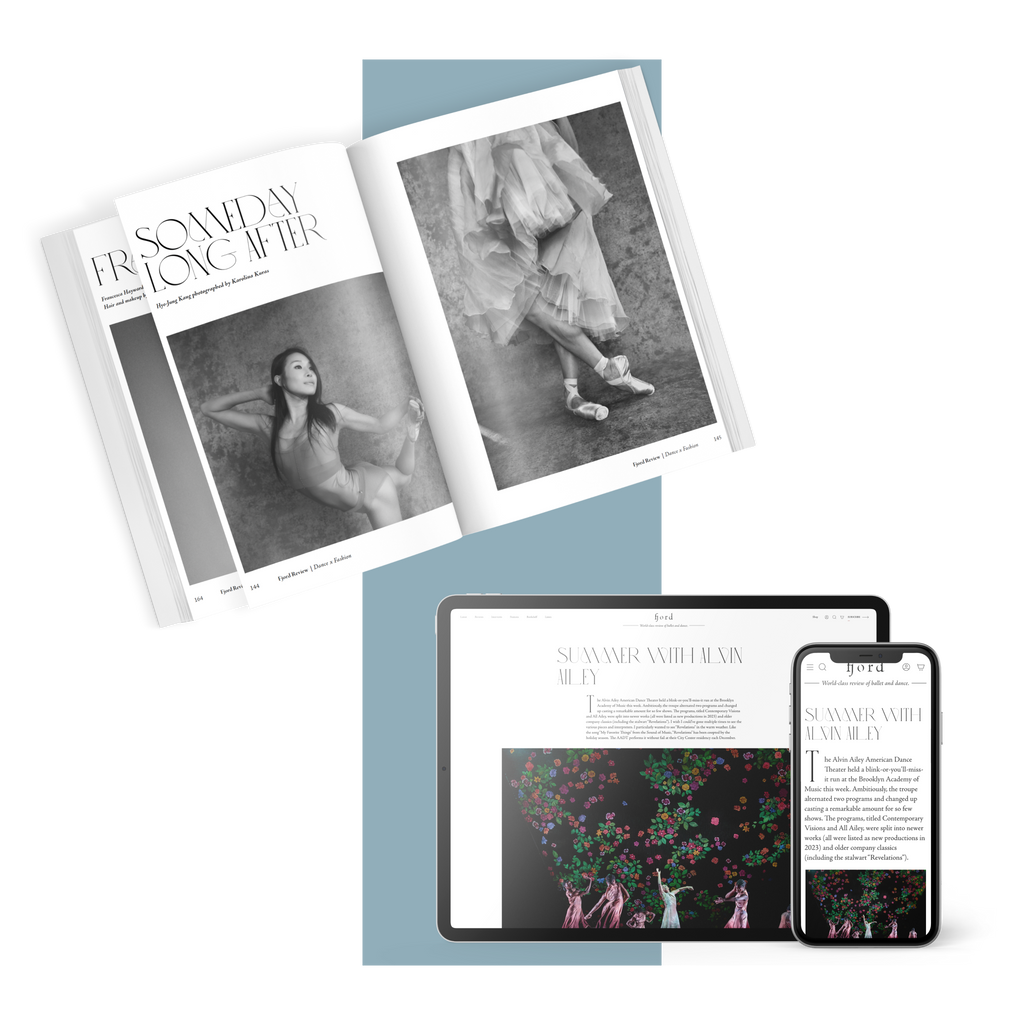Talent Time
It’s “Nutcracker” season at San Francisco Ballet—36 performances packed into three weeks—which means that the company is currently serving two distinct audiences.
Plus
World-class review of ballet and dance.
Elongated bodies meticulously keep time stepping on demi-pointe to the hard driving techno-beat. They crisscross the stage in various groupings from different directions with their prissy steps sporting opaque nylon knee socks, bare limbs, and nude colored leotards. The costumes by Rebecca Hytting amplify the picture of constricting uniformity; at the same time, they reveal the individual body shapes and builds of the seventeen highly trained dancers of tanzmainz. Trapped in a throbbing playlist and choreography of constrained energy, these bodies look like humans on a conveyor belt—intermittently exposing micro-signs of desperateness for escape. And occasionally some do escape—that’s when it gets interesting. Such is the set-up for Sharon Eyal’s “Soul Chain” created for and performed by tanzmainz, the contemporary dance company of the Staatstheater Mainz in Germany.
Performance
Place
Words

Tanzmainz in “Soul Chain” by Sharon Eyal. Photograph by Andreas Etter


“Uncommonly intelligent, substantial coverage.”
Your weekly source for world-class dance reviews, interviews, articles, and more.
Already a paid subscriber? Login
It’s “Nutcracker” season at San Francisco Ballet—36 performances packed into three weeks—which means that the company is currently serving two distinct audiences.
PlusLast week I caught up with choreographer Pam Tanowitz and Opera Philadelphia’s current general director and president, countertenor Anthony Roth Costanzo to talk about “The Seasons,” the company’s latest production premiering at the Kimmel Center’s 600-plus seat Perelman Theater on December 19.
PlusIf Notre-Dame remains one of the enduring symbols of Paris, standing at the city’s heart in all its beauty, much of the credit belongs to Victor Hugo.
PlusWhen dancer and choreographer Marla Phelan was a kid, she wanted to be an astronaut. “I always loved science and astronomy,” Phelan said.
Plus
comments